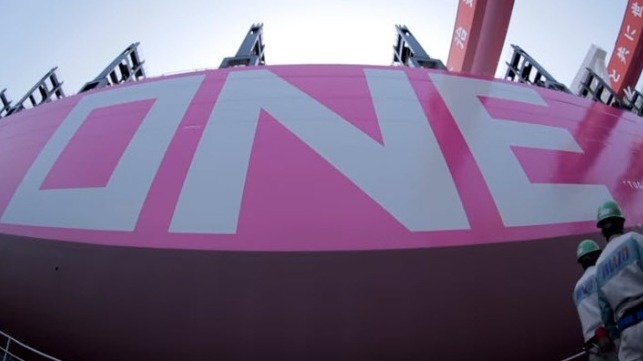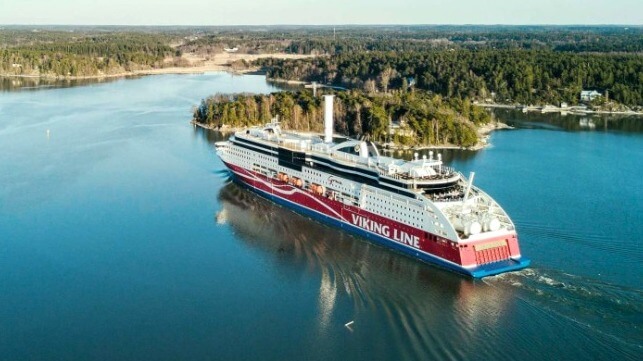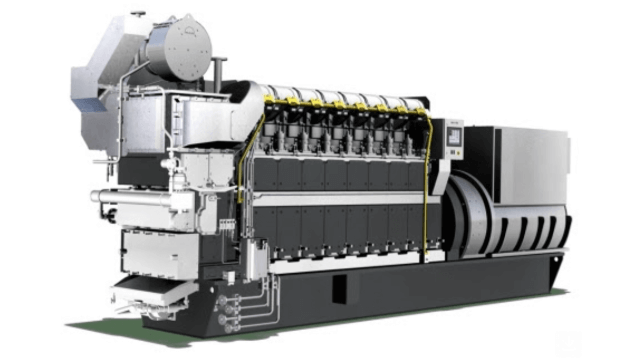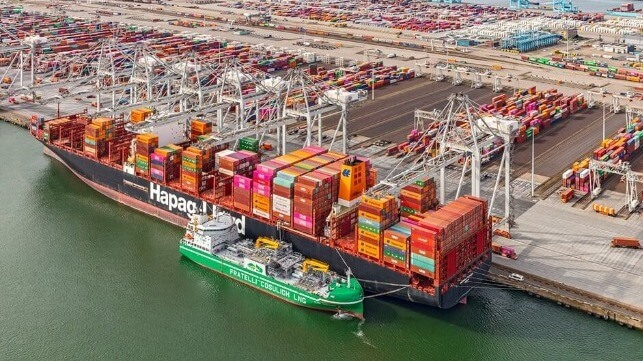Could We Power Flights With Human Waste?💩
- Sustainable aviation fuel (SAF) derived from human waste is being explored as a promising alternative to fossil fuels for powering flights.
- Governments worldwide are pushing for greener aviation practices, with targets set for SAF adoption and emissions reduction in the aviation sector.
- Companies like Wizz Air and Firefly are investing in projects to convert sewage into SAF, aiming to capitalize on abundant feedstock and reduce carbon emissions in the aviation industry.
Aviation companies worldwide have increasingly been investing in research and development into sustainable aviation fuel (SAF) to help decarbonise their flights. The aviation sector is considered a hard-to-abate industry, as there is no clear alternative to fossil fuels that can be used to power commercial flight. And yet, governments worldwide are putting increasing pressure on companies to make their operations greener. The most promising fossil fuel alternative to date is SAF, which many airlines are now mixing with conventional fuels to reduce emissions. Recently, Wizz Air and Firefly announced that they intend to use human waste to produce jet fuel for future flights through an innovative project in the U.K.
SAF is a biofuel that can be used to power aircraft. It has similar properties to conventional jet fuel but produces far fewer greenhouse gas emissions. A wide variety of feedstock can be used to produce SAF, from food waste to excess crops. Using agricultural waste can provide farmers with extra income while using leftover food can help reduce waste. In the U.S. alone, an estimated one billion dry tonnes of biomass can be collected sustainably each year, which is enough to produce between 50 and 60 billion gallons of SAF. According to the International Civil Aviation Organisation, 120 airports around the globe are distributing SAF; 40 SAF policies have been adopted or are under development; and 42 feedstocks have been recognised for the production of SAF.
Several countries are rapidly expanding their biofuel production to support the development of SAF, as well as other low-carbon products, such as fertiliser and biodiesel. The demand for these fuels has grown exponentially in recent years as governments put increasing pressure on companies to decarbonise their operations, particularly in hard-to-abate sectors, such as industry and transport. The demand for biofuel rose to 4.3 exajoules (EJ) in 2022, surpassing pre-pandemic levels. To meet net-zero emissions aims by 2050, the global production of biofuel needs to increase to 10 EJ by 2030, requiring an average growth of around 11 percent per year, according to the International Energy Agency (IEA).
In Europe, the EU has stated that by 2035 SAF must contribute at least 20 percent of the fuel used in aircraft. Meanwhile, the U.K. is expected to soon announce a 10 percent minimum SAF mix starting in 2030. The International Air Transport Association aims to achieve net-zero carbon emissions by 2050 and it expects SAF to contribute to 65 percent of emissions reductions in the industry. This will be supported by new technology, such as electric and hydrogen, contributing 13 percent, improved infrastructure and operational efficiencies, (3 percent) and offsets and carbon capture (19 percent).
Recently, the low-cost, Hungarian airline Wizz Air and the British sustainable aviation company Firefly announced they are planning to use human waste to produce SAF in the coming years. The two companies intend to build a commercial refinery in Essex to convert treated sewage into SAF. Wizz is investing in the project by placing an order for up to 525,000 tonnes of Firefly’s human waste-derived SAF over the next 15 years, which could be worth hundreds of millions of pounds.
The potential use of human waste is highly appealing to biofuel producers as it could provide abundant feedstock for low-carbon fuel production. There is a limited supply of food and agricultural waste, and acquiring these feedstocks can be costly. In contrast, converted sewage is expected to be cheaper and more abundant. Firefly’s COO, Paul Hilditch, believes it could provide up to five percent of the fuel demand of U.K. airlines.
Firefly has already produced small test quantities of SAF that Hilditch said were “chemically indistinguishable” from jet fuel. However, the fuel is still undergoing regulatory testing and the firm needs significantly more funding to develop a full-scale factory for production. James Hygate, Firefly’s CEO, hopes the company will be able to deliver commercial supplies of SAF by 2028 or 2029, with the first facility in Harwich serving London airports. Hygate stated, “We’re turning sewage into jet fuel, and I can’t think of many things that are cooler than that.”
At present, much of the biosolids in the U.K. are used for muck spreading on farmland, around 87 percent. Several companies in the biofuel industry are competing for agreements with utility companies to use their waste for fuel production, for a range of applications. While environmentalists believe that waste-to-jet fuel may not be the best use of sewage, those in the industry see it as a sustainable production option, as they will be using unavoidable waste to make something valuable. Further, residue from the sewage-to-fuel process could still be used to improve soil. While the U.K. uses its sewage to support other industries, many countries incinerate their human waste, which demonstrates the huge potential for converting waste into other products of value.
By Felicity Bradstock for Oilprice.com
- Sustainable aviation fuel (SAF) derived from human waste is being explored as a promising alternative to fossil fuels for powering flights.
- Governments worldwide are pushing for greener aviation practices, with targets set for SAF adoption and emissions reduction in the aviation sector.
- Companies like Wizz Air and Firefly are investing in projects to convert sewage into SAF, aiming to capitalize on abundant feedstock and reduce carbon emissions in the aviation industry.
Aviation companies worldwide have increasingly been investing in research and development into sustainable aviation fuel (SAF) to help decarbonise their flights. The aviation sector is considered a hard-to-abate industry, as there is no clear alternative to fossil fuels that can be used to power commercial flight. And yet, governments worldwide are putting increasing pressure on companies to make their operations greener. The most promising fossil fuel alternative to date is SAF, which many airlines are now mixing with conventional fuels to reduce emissions. Recently, Wizz Air and Firefly announced that they intend to use human waste to produce jet fuel for future flights through an innovative project in the U.K.
SAF is a biofuel that can be used to power aircraft. It has similar properties to conventional jet fuel but produces far fewer greenhouse gas emissions. A wide variety of feedstock can be used to produce SAF, from food waste to excess crops. Using agricultural waste can provide farmers with extra income while using leftover food can help reduce waste. In the U.S. alone, an estimated one billion dry tonnes of biomass can be collected sustainably each year, which is enough to produce between 50 and 60 billion gallons of SAF. According to the International Civil Aviation Organisation, 120 airports around the globe are distributing SAF; 40 SAF policies have been adopted or are under development; and 42 feedstocks have been recognised for the production of SAF.
Several countries are rapidly expanding their biofuel production to support the development of SAF, as well as other low-carbon products, such as fertiliser and biodiesel. The demand for these fuels has grown exponentially in recent years as governments put increasing pressure on companies to decarbonise their operations, particularly in hard-to-abate sectors, such as industry and transport. The demand for biofuel rose to 4.3 exajoules (EJ) in 2022, surpassing pre-pandemic levels. To meet net-zero emissions aims by 2050, the global production of biofuel needs to increase to 10 EJ by 2030, requiring an average growth of around 11 percent per year, according to the International Energy Agency (IEA).
In Europe, the EU has stated that by 2035 SAF must contribute at least 20 percent of the fuel used in aircraft. Meanwhile, the U.K. is expected to soon announce a 10 percent minimum SAF mix starting in 2030. The International Air Transport Association aims to achieve net-zero carbon emissions by 2050 and it expects SAF to contribute to 65 percent of emissions reductions in the industry. This will be supported by new technology, such as electric and hydrogen, contributing 13 percent, improved infrastructure and operational efficiencies, (3 percent) and offsets and carbon capture (19 percent).
Recently, the low-cost, Hungarian airline Wizz Air and the British sustainable aviation company Firefly announced they are planning to use human waste to produce SAF in the coming years. The two companies intend to build a commercial refinery in Essex to convert treated sewage into SAF. Wizz is investing in the project by placing an order for up to 525,000 tonnes of Firefly’s human waste-derived SAF over the next 15 years, which could be worth hundreds of millions of pounds.
The potential use of human waste is highly appealing to biofuel producers as it could provide abundant feedstock for low-carbon fuel production. There is a limited supply of food and agricultural waste, and acquiring these feedstocks can be costly. In contrast, converted sewage is expected to be cheaper and more abundant. Firefly’s COO, Paul Hilditch, believes it could provide up to five percent of the fuel demand of U.K. airlines.
Firefly has already produced small test quantities of SAF that Hilditch said were “chemically indistinguishable” from jet fuel. However, the fuel is still undergoing regulatory testing and the firm needs significantly more funding to develop a full-scale factory for production. James Hygate, Firefly’s CEO, hopes the company will be able to deliver commercial supplies of SAF by 2028 or 2029, with the first facility in Harwich serving London airports. Hygate stated, “We’re turning sewage into jet fuel, and I can’t think of many things that are cooler than that.”
At present, much of the biosolids in the U.K. are used for muck spreading on farmland, around 87 percent. Several companies in the biofuel industry are competing for agreements with utility companies to use their waste for fuel production, for a range of applications. While environmentalists believe that waste-to-jet fuel may not be the best use of sewage, those in the industry see it as a sustainable production option, as they will be using unavoidable waste to make something valuable. Further, residue from the sewage-to-fuel process could still be used to improve soil. While the U.K. uses its sewage to support other industries, many countries incinerate their human waste, which demonstrates the huge potential for converting waste into other products of value.
By Felicity Bradstock for Oilprice.com





